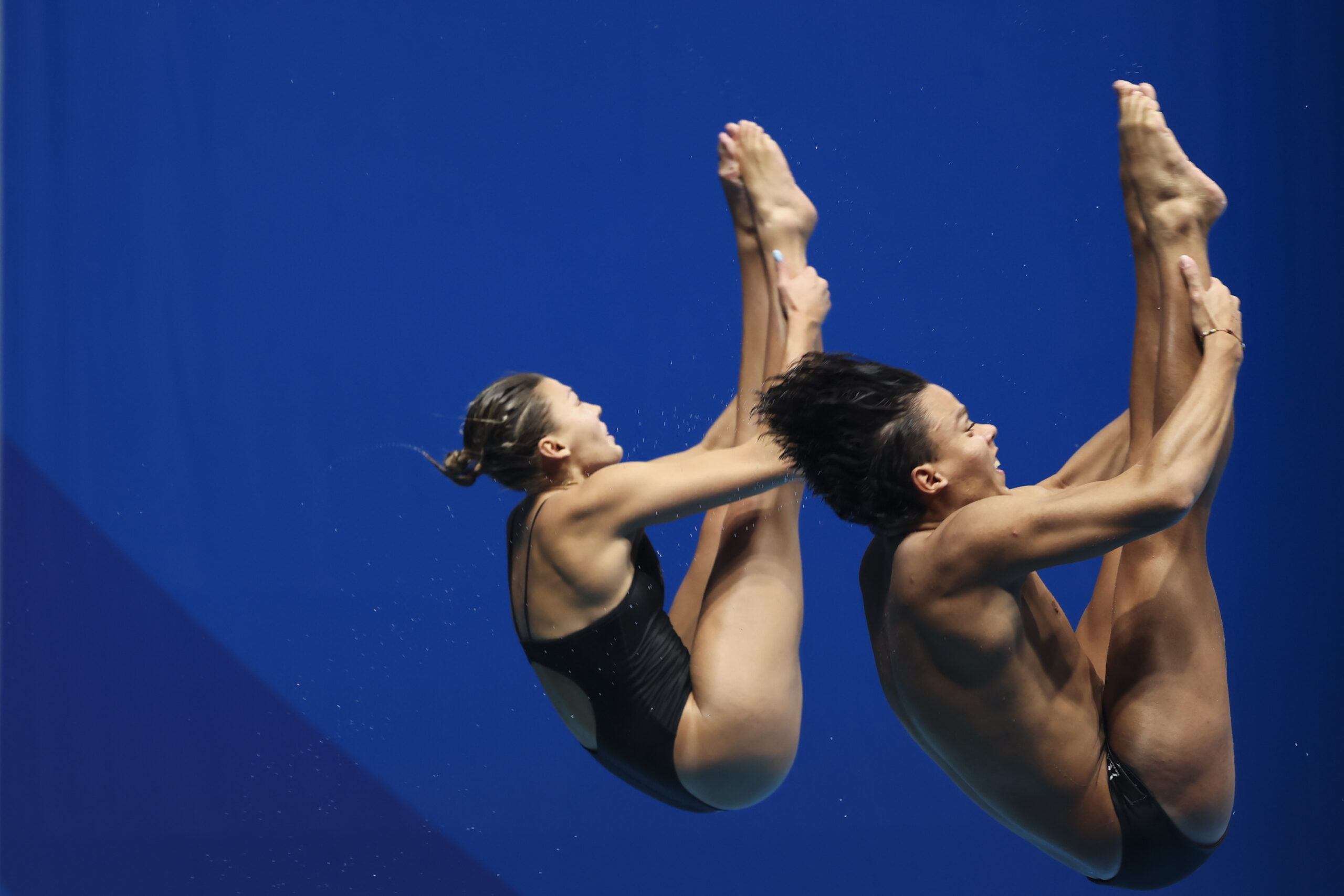Diving – Glossary
| Armstand |
A dive starting from a handstand position on the platform. Requires balance, strength, and precise control before takeoff. |
| DD (Degree of Difficulty) |
A rating based on rotations, twists, and height. Higher DD means a more complex dive. |
| Entry |
How the diver enters the water, ideally with minimal splash. Proper technique affects both safety and scoring. |
| Layout |
A fully extended body position with no bends. Requires strong core control and is common in twisting dives. |
| Pike |
A bent-at-the-waist position with straight legs. Used for controlled somersaults and rotations. |
| Platform |
The fixed structure for diving, typically 10m or 27m high. Designed for stability and a safe takeoff. |
| Rip Entry |
A perfect entry with little to no splash. Achieved by a tight body position and precise hand placement. |
| Somersault |
A flip around the horizontal axis. Speed depends on body position (tuck, pike, or layout). |
| Spotting |
Using visual cues to control rotation and positioning. Helps time movements for a safe and clean dive. |
| Takeoff |
The jump from the platform, which sets the dive’s height and rotation. A strong takeoff ensures better control in the air. |
| Tuck |
A compact position with knees pulled to the chest. Allows for faster somersaults. |
| Twist |
A rotation around the body’s vertical axis. Often combined with somersaults for added difficulty. |
Download Rules as Pocketguide
